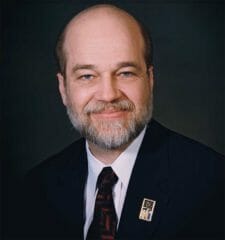Opinion

USA – -(AmmoLand.com)- Friday evening I was startled by the news of the passing of Associate Supreme Court Justice Ruth Bader Ginsburg.
Now 48 hours or so later, the politicization of the federal judicial selection process is changing the political landscape of the election. In the most unprecedented set of circumstances of any election ever held, it just became unique. The political rancor of the confirmation process has escalated over the past 5 decades. Remember President Obama’s Supreme Court nominee Merrick Garland? Slightly more than 4 years ago the positions taken by congressional leadership were reversed. That was about 9 months before the election. The context of history can provide some insight.
Article 3 of the U.S. Constitution created the Supreme Court. It also left to the finite wisdom of Congress the details. The Judiciary Act of 1789, defined the court’s make-up as 5 Associate Justices and the Chief Justice. The Judiciary Act of 1801 made it 4 plus the Chief to keep President Jefferson from having the opportunity to make an appointment to the Court. In 1807 Jefferson and his allies expanded the Court to 7. In 1837 Andrew Jackson led the successful effort to expand the Court to 9. During the Civil War, the Court was further expanded to 10 Justices. The final change was in 1869 to the current 9 Justices.
In 1937 President Franklin Roosevelt proposed adding up to 6 Justices. His proposal, presented to the Nation in a Fireside Chat was in response to the Supreme Court’s declaring unconstitutional “New Deal” legislation. Historical descriptions were, that when the “court-packing” legislation was introduced in the Senate by the Vice President, while in the chair, he held his nose and displayed thumbs down to the chamber. Gestures are not recorded in the Congressional Record. Progressives are not united. Vice President Biden spoke against the idea of expanding the court during the primary. He does appear persuadable. While the proposal failed in 1937 it had the desired effect. The Court found a more flexible interpretation of constitutionality.
When Justice Owen Roberts began voting with the 4 liberal Justices in support of New Deal legislation it was described as “the switch in time that saved nine”.
Fast forward to July 31, 1987, President Reagan nominates Robert Bork to be an Associate Justice.
Democrats, then in the majority, orchestrated a committee hearing seen as so politicized and unfair that a new verb, “bork”, became part of our language. While those nominated by democratic administrations and some by Republicans managed to be confirmed by the U.S. Senate with little controversy. Some of those put forward by Republicans suffered a different fate. Timing is important to many. They believe a semblance of a balance of power must be maintained on the Court. Think of Clarence Thomas. During the last 2 years of the Obama administration, the Democrats repealed the 60-vote rule for the confirmation of federal trial court judges. 8 years later, to push their appellate court nominations thru, Republicans changed the Senate rules to create another exception the 60-vote rule, and proceed to a vote with a simple majority. Jefferson and his political adversaries taught us turnabout is fair play. Now some Democrats are actually proposing the elimination of that rule altogether, if they gain the majority after the election, as they did for Obamacare. The nominating process is essentially the President nominates and the Senate can choose hold hearings and vote on confirmation or not. If the Senate chooses to move forward it can accept or reject the nomination.
The heart of the issue is abortion, it always has been. The 2nd Amendment and Heller are ancillary but are going along for the ride.
The rhetoric escalated reaching an unprecedented level with Brett Kavanaugh’s nomination. During the Kavanaugh hearing, it became common to see placards saying “Stolen Seat”. They were probably referencing the Garland/Gorsuch drama surrounding the replacement of Scalia. Justice Kavanaugh’s confirmation became more volatile because he was seen as a conservative replacement for the swing vote of Justice Kennedy. The consequences of that confirmation reverberate today. Maine Senator Susan Collins supported his confirmation and she has drawn the ire of the Emily’s List folks. Her reelection campaign has been nationalized and she is behind in the polls. Now she and Sen. Murkowski of Alaska have said the Senate process should wait until after the election. I don’t know if anyone thought to include the lame-duck period between the election and the next Congress being sworn in as part of the question.
Progressives are discussing how to undermine the Trump-appointed judiciary. Term or age limiting judges and expanding the number of justices on the Supreme Court are under consideration. The earlier references I found were prior to the Kavanaugh hearings. During the primary when democratic candidates were trying to break out of the pack, Pete Buttigieg put court reform at the center of his campaign. Expanding the Court to 15, 5 by Republicans, 5 by Democrats, and 5 by the 10 justices appointed. Beto O’Rourke and Kamala Harris stated they were open to the discussion with the goal of reversing the conservative majority and pave the way for the progressive agenda. The Supreme Court’s majority may be the only obstruction preventing the tyranny of the majority if the Republicans lose the Senate and the Whitehouse. When the minority is made subject to the whims of the majority, those in power eventually overreach, becoming the minority and rue the day they changed the rules.
Trump’s perceived support by evangelicals and others on the right was seen as soft. The passing of Justice Ginsburg has brought the election into sharp focus for them. The previous 48 hours indicate the issue will crystallize further. At President Trump’s rally Saturday night the chant wasn’t “build the wall”, it was “fill the seat”.
President Trump may announce his nomination as soon as Tuesday. There is lots of talk about it being a woman. Filling the seat may become a rallying point to drive Republican turnout. Chief Justice Roberts is seen by court observers as the new swing vote. The Left feels entitled to their champion’s seat. Slightly more than 24 hours after the news of her death broke Biden campaign announced they had collected more than 100 million online Saturday. Since Friday Democrat nominees for US Senate received more than 20 million in donations. There are chinks in the Democrat’s election armor. Parts of their base could care less about the Court and abortion. Filling the seat before the election has the potential to cause dissipation of that enthusiasm of Republicans. Filling the seat before the election or during the lame-duck period would be used to justify a court-packing proposal in the minds of progressives. Filling the seat will reverberate in the foreseeable future. Of Course, there is no guarantee that not filling the seat would be a deterrent to progressives. They have never demonstrated a capacity for self-restraint.
If past decisions are an indication of things to come, we will be tested regardless of the choice made by Senate Republicans.
Democrats feel nervous about the presidential race but are confident and Republicans are becoming more energized. We will see how everyone feels after the debates. The election’s outcome will be dependent on turnout, momentum, and timing. Neither side appears to regret their apparent hypocrisy. Both appear to believe, the end justifies the means. The final shreds of bipartisanship are being sacrificed on the altar of expediency. If Sen. Mitch McConnell’s decision is correct, then those shreds are merely an illusion, and therefore choosing to delay will only be a lost opportunity.
Supporters of the 2nd Amendment must at a minimum match our opponent’s efforts. Knowing that liberty hangs in the balance should push us all to get more involved. It should push us to volunteer and donate last-minute money to propel pro-rights candidates across the finish line. If we do not act now it may be too late in a week or two. Defeating anti-rights candidates takes less sweat, blood, and treasure than defeating their anti-gun legislation in the legislature or trying to get the Courts to declare them in violation of the Constitution.
 Phillip Journey was NRA’s political activist of the year in 1993. He helped write NRA’s 1st grassroots manual has worked in over 100 campaigns at the local and state level. Phil served in the Kansas Senate and is now running for re-election to his 4th term as Judge in the largest city in his State and faces a general election opponent. He was recently elected to the NRA Board and will be sworn in after the Tucson meeting.
Phillip Journey was NRA’s political activist of the year in 1993. He helped write NRA’s 1st grassroots manual has worked in over 100 campaigns at the local and state level. Phil served in the Kansas Senate and is now running for re-election to his 4th term as Judge in the largest city in his State and faces a general election opponent. He was recently elected to the NRA Board and will be sworn in after the Tucson meeting.
